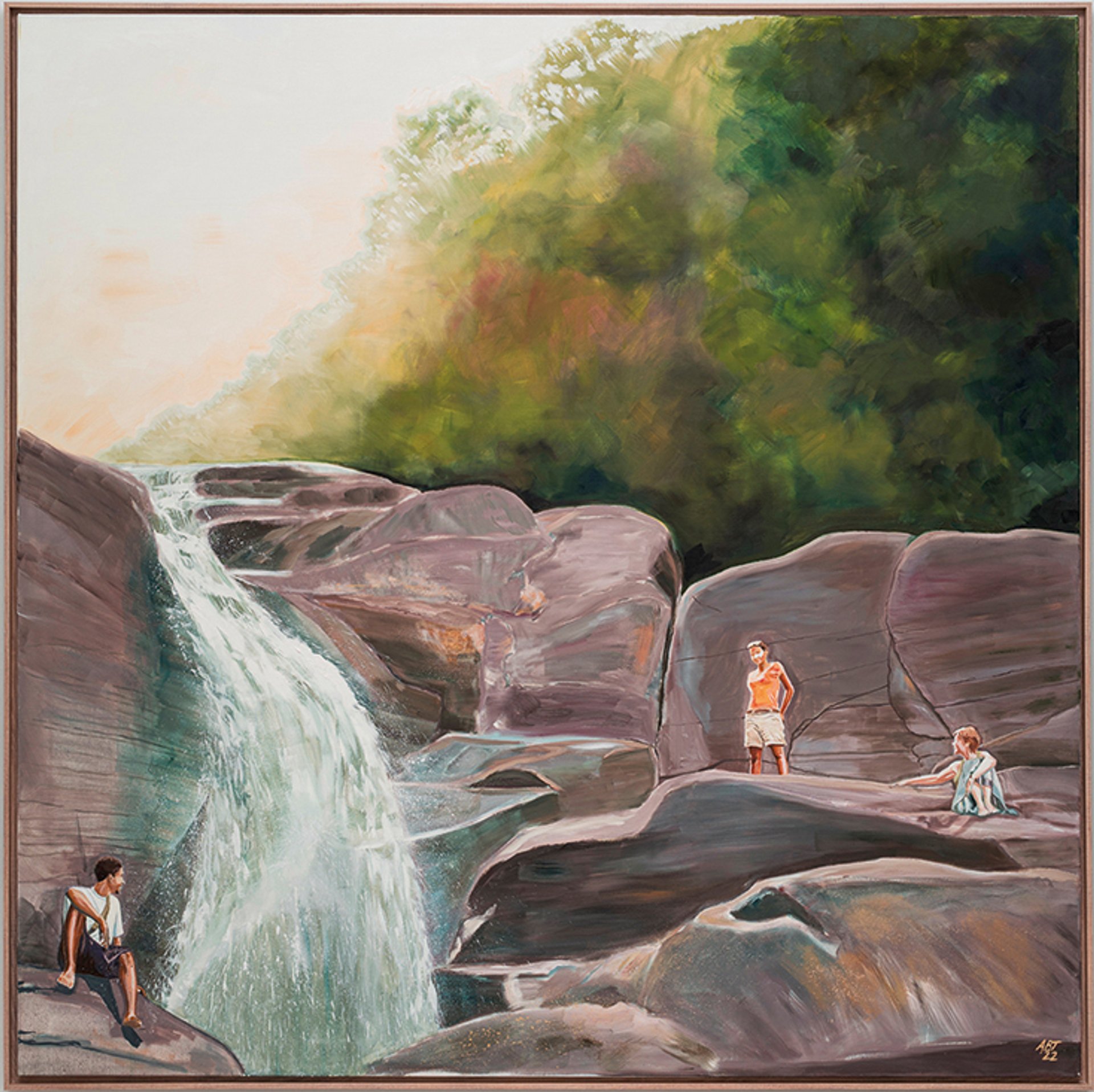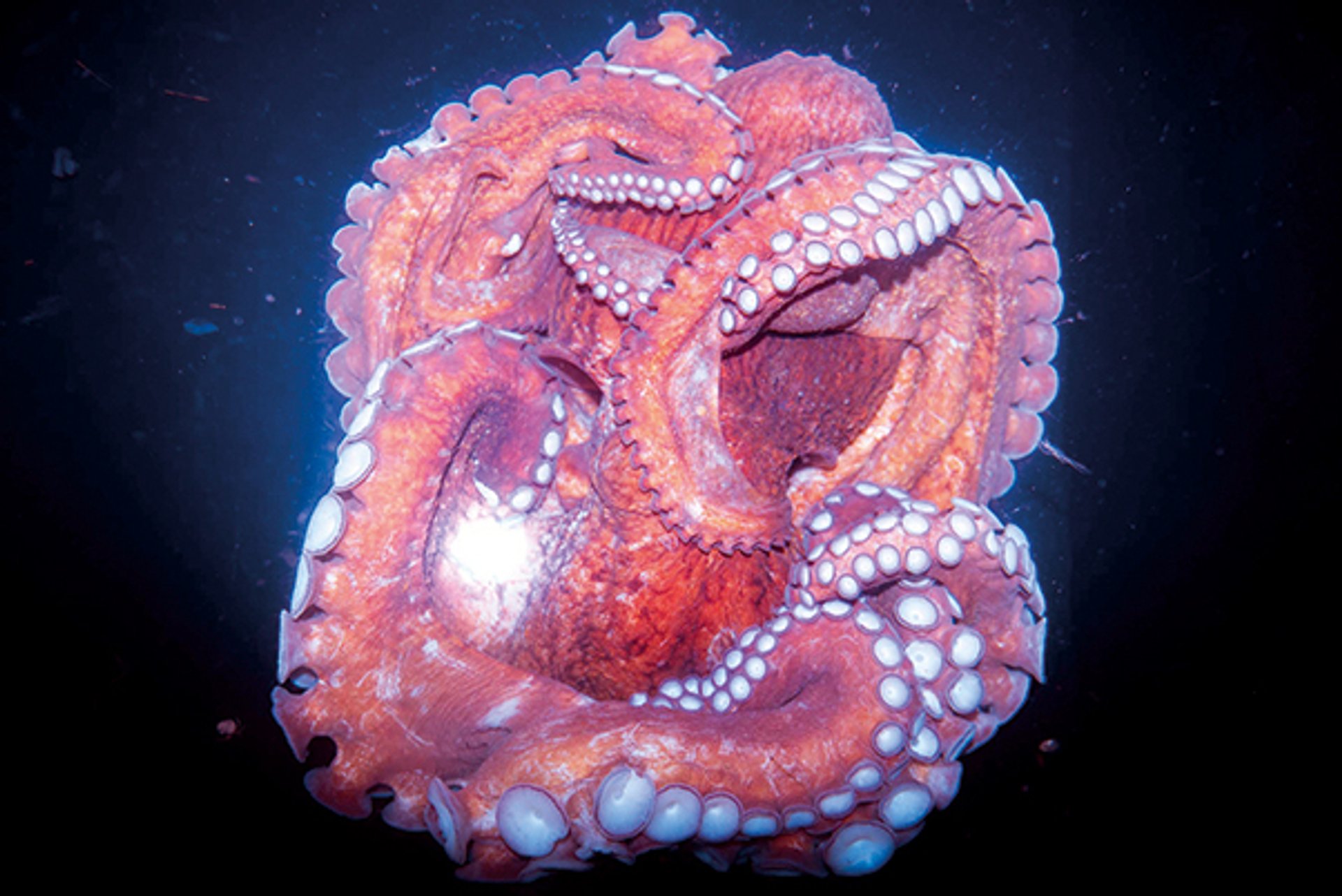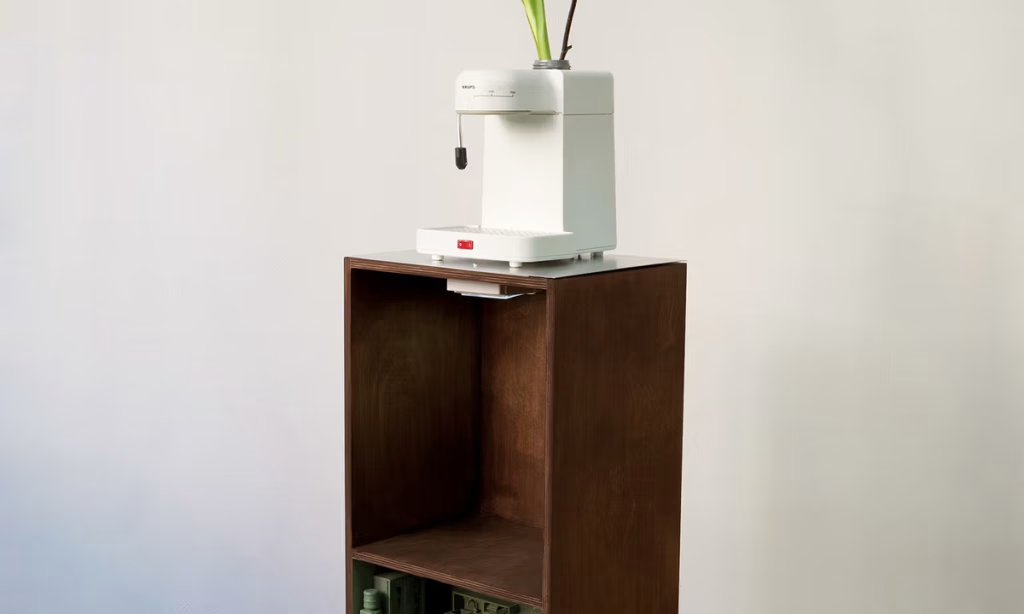Phung-Tien Phan: Full of Debt
Misako & Rosen, until 16 November
A Vietnamese-German artist born in Essen and educated at the Kunstakademie Düsseldorf, Phung-Tien Phan creates sculptures and videos that explore the social importance of everyday objects. Her work shows how roles are played out in both public and private settings, emphasising the intentional choices of the cultural references that shape our surroundings. Her first solo show with the gallery, and her debut in Japan, features new sculptures created on-site using objects she collected in Essen, such as toys and radios, which she has wrapped in fabric to resemble dumplings. Using a casual approach in her work, her diasporic assemblages fit seamlessly within Misako & Rosen’s informal programme.
An image from the mixed-media work A Hole within a Hole within a Hole (2025) by the art collective ChimPom from Smappa! Group, who are showing at Anomaly
Courtesy the artists
ChimPom from Smappa! Group: A Hole Within a Hole Within a Hole
Anomaly, until 9 November
ChimPom from Smappa! Group is a Tokyo-based artist collective formed in 2005 when its members—Ryuta Ushiro, Yasutaka Hayashi, Ellie, Masataka Okada, Motomu Inaoka and Toshinori Mizuno—were in their twenties. Widely recognised for satirical projects that serve as social interventions, the guerrilla art group has exhibited internationally and been collected by major museums worldwide. Their fourth solo show at the Anomaly gallery, A Hole Within a Hole Within a Hole, explores environmental waste issues through the concept of holes, from manholes and sewers to less visible ones filled with space junk.

Figures in a Landscape (2022) by Arthur Timothy, one of five African artists exhibiting at space Un in Tokyo
Ric Bower
The Clearing
Space Un, until 26 December
This group exhibition of paintings, which showcases the works of five emerging artists from the African diaspora, has been organised by the prominent British journalist, broadcaster and curator Ekow Eshun, the former director of the Institute of Contemporary Arts in London.
The Clearing draws inspiration from a key scene in Toni Morrison’s acclaimed and influential 1987 novel Beloved, where a secluded forest area becomes a sanctuary—a place of healing, belonging and creative resistance—for the Black community. The exhibition features landscape-related paintings by Nengi Omuku, Solá Olúlòde, Okiki Akinfe, Arthur Timothy and Kwesi Botchway at space Un, a new arts and culture venue that focuses on contemporary African art and cultural exchanges between Japan and African countries.

Lieko Shiga’s Don’t Go, Come Back (2025) is one of the works showing at Artizon Museum, alongside pieces by Chikako Yamashiro
© Lieko Shiga, courtesy of the artist
Jam Session: The Ishibashi Foundation Collection × Chikako Yamashiro × Lieko Shiga—In the Midst Of
Artizon Museum, until 12 January 2026
Pairing newly commissioned works by Chikako Yamashiro and Lieko Shiga with pieces from the encyclopaedic Ishibashi Foundation Collection, this year’s exhibition from the museum’s annual Jam Session series creates a compelling dialogue between the two award-winning artists and related historical works. Rooted in different geographic regions, the exhibition explores themes of history and memory. Yamashiro’s video installation recalls the Second World War bombings of her native Okinawa, as well as of Tokyo and the Pacific island nation of Palau. Meanwhile, Shiga’s four-metre high photographic scroll critically examines the historical ideas of progress and energy in her adopted Tohoku homeland and the Sanriku coastline after the devastation of the 2011 earthquake and tsunami.

Untitled from photographic artist Eiki Mori’s 2025 series Moonbow Flags, which is one of the works showing at the Ken Nakahashi gallery until 20 December
Courtesy the artist
Eiki Mori: Moonbow Flags
Ken Nakahashi, until 20 December
A photographic artist known for his explorations of male sexuality, Eiki Mori studied at Parsons School of Design in New York before returning to Tokyo to establish his practice. Exploring different forms of expression, Mori has expanded his creativity over the years to include performance, sound installation, videos, drawings, poems and short stories, bringing a poetic vision to his overall body of work.
Returning for an eighth solo exhibition at the gallery, his show Moonbow Flags features a new photographic series that blends portraiture with transparent, hand-drawn geometric shapes, suggesting anti-authoritarian flags inspired by lunar rainbows and domestic design motifs.
